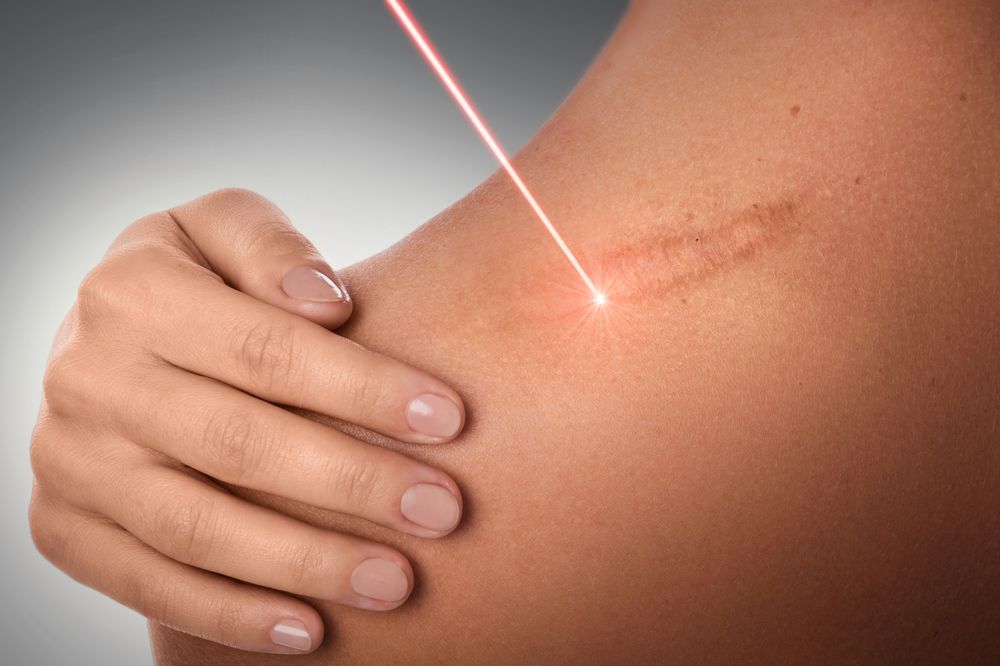Traditional surgery is a technique that involves making an incision in the patient’s skin. The surgeon then uses the incision to access and operate on the patient’s internal organs or tissues. Cutting-edge technology helps make an incision in the patient’s skin during laser surgery instead of a deep incision as traditional surgery does. A surgeon directs a laser beam by hand to create an incision in the patient’s skin, which is less painful and causes minimum scarring.
1. The Level of Pain
The most important benefit of laser surgery over traditional medical surgery is that it helps minimize pain for patients. Although anesthesia is helpful for patients undergoing conventional medical surgery, it has its risks, such as possible allergic reactions to some types of anesthesia drugs, vomiting, and even death from overdose. Since laser surgery only requires local anesthesia, there isn’t any risk of overdosing or fatal reactions during the procedure. The use of medical and aesthetic lasers helps reduce patients’ pain since they are minimally invasive during medical and aesthetic procedures.
2. Post-Operative Recovery Time
Another significant benefit of using lasers for surgical procedures is that it helps reduce post-operative recovery time for patients. The use of lasers cuts down wound healing time because there are no open wounds in the body to leave scars or stitches behind.
Laser surgery also reduces swelling and inflammation because a laser beam can seal the wound more efficiently than other methods used during traditional medical operations. The reason is that patients may have to deal with bleeding, swelling, and other complications more often when they undergo a traditional surgical procedure.
3. Use of Anesthesia
When undergoing a traditional surgery, you will usually receive general anesthesia, which puts you in a state of unconsciousness for several hours. In contrast, laser surgery only requires local anesthesia to numb your area of treatment. Traditional surgery tends to cause more discomfort because it requires deeper cuts into muscle tissue. Still, many patients have reported that laser surgery is less painful due to its lack of general anesthesia. The reason is that the laser acts directly on nerve endings to seal incisions and cut out tissue.
4. Invasiveness
Traditional Surgery Traditional surgery involves an incision on the body, an invasive method, to get to the problem area. For example, if you need knee replacement surgery, your surgeon will make an incision inside your knee and remove tissue from a damaged joint so that they can repair it with new parts. Once the procedure is over, you will receive stitches to force the incision to close and place it in a cast or brace for healing. The recovery time for traditional surgery is much longer than for laser surgery because of the invasive nature of the procedure.
On the other hand, laser surgery is minimally invasive and does not require incisions. Instead, lasers help surgeons get a closer look at problem areas and conduct repairs from within. Doctors would use lasers to remove damaged tissue during knee replacement surgery while performing a knee replacement procedure. Consequently, laser surgery allows patients with knee replacement surgery to recover much faster because there are no incisions on their knees!
5. The extent of Tissue Damage and Bleeding
Gholam A. developed laser surgery in Eastern Europe, and the first procedure was a skin graft for a burn victim in 1964. In 1969, surgeons performed the first laser eye surgery. The first laser heart surgery took place in 1971, and in 1975, the first open-heart surgery by laser took place. Lasers have many practical applications in medical procedures.
Tissue damage is minimized with lasers since most tissues do not absorb infrared light. Lasers are also helpful in cutting tissue precisely because surgeons can direct them at specific targets, such as blood vessels and nerves, which are heated enough to cause bleeding but not enough to cause scarring or thermal heat damage.
6. Repairing and Joining Tissues Together
Traditional surgery methods may involve suturing the repair tissue with thread and needle, which can be painful and take time to heal. On the other hand, laser surgery uses a laser beam to seal the skin and cut away the skin with damages. As a result, patients who undergo laser surgery tend to recover more quickly and experience less pain.
Conclusion
Laser surgery utilizes cutting-edge technology, and it’s also safer than traditional methods. While you might have to make a few more follow-up visits with your doctor after laser surgery, you’re less likely to need time off work due to complications than after traditional procedures. Your chances of infection are lower too. Laser surgery can be more effective than traditional surgeries while potentially reducing downtime and improving recovery times. You can contact The Laser Trader for all your medical laser needs at a favorable price.













Comments